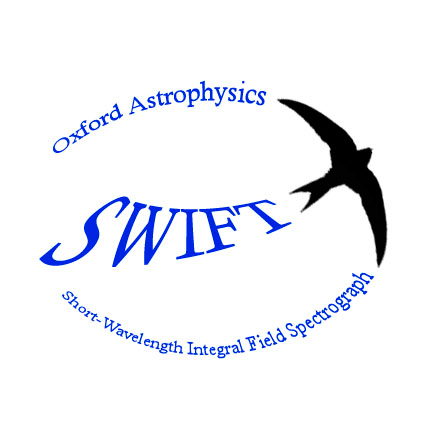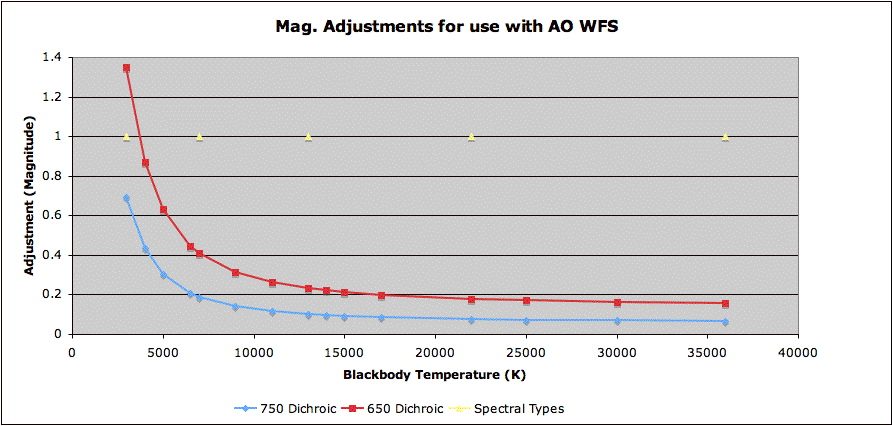
|
The Oxford SWIFT Spectrograph |

|
SWIFT with AOSWIFT works in conjuction with PALM 3000, an extreme adpative optics system commissioned in 2011 at the 200 inch telescope on Palomar. P3K uses a woofer-tweeter deformable mirror arrangement, with a 3388 actuator deformable mirror (tweeter) providing the high order correction, and the former 241 actuator deformable mirror (woofer) providing the low order AO correction. Performance is very good, with significant Strehl even over the SWIFT wavelength range, which is shorter than most AO assisted instruments. Significant improvement in spatial reolution and substantial gains in sensitivity (ensquared energy) is achieved for bright natural guide stars. Expected performance of P3K can be found on the P3K Proposers Information page for 2013B. The figure below shows the ensquared energy distribution for SWIFT+P3K observations of a bright star. Note that almost half the energy is within a 0.1″ spot. It should also be remembered that SWIFT can operate in a "non-AO" mode, where the AO system does not do any correction of the seeing. The AO system always corrects static aberations in the telescope however, so even "non-AO" image quality should be better than the default telescope image quality. AO operations requirementsOperationally, the following constraints have to be borne in mind for operations with adaptive optics:
Impact of the SWIFT dichroicsThe SWIFT dichroics reduce the limiting magnitude of the AO reference stars, as the red wavelength light that would have been used for wavefront sensing is now re-directed to SWIFT. Obviously, using the 750 nm dichroic has less impact on the guide star magnitude than the 650 nm dichroic, although the magnitude of the effect depends on the spectral type of the AO reference star. The plot below summarizes the difference in guide star magnitude as a function of spectral type when using the SWIFT dichroics in place of the PHARO dichroics. A detailed analysis can be found here.
|
||
| Site © 2014, The University of Oxford Physics Department. Comments about this website: email n.thatte1@physics.ox.ac.uk. | ||
